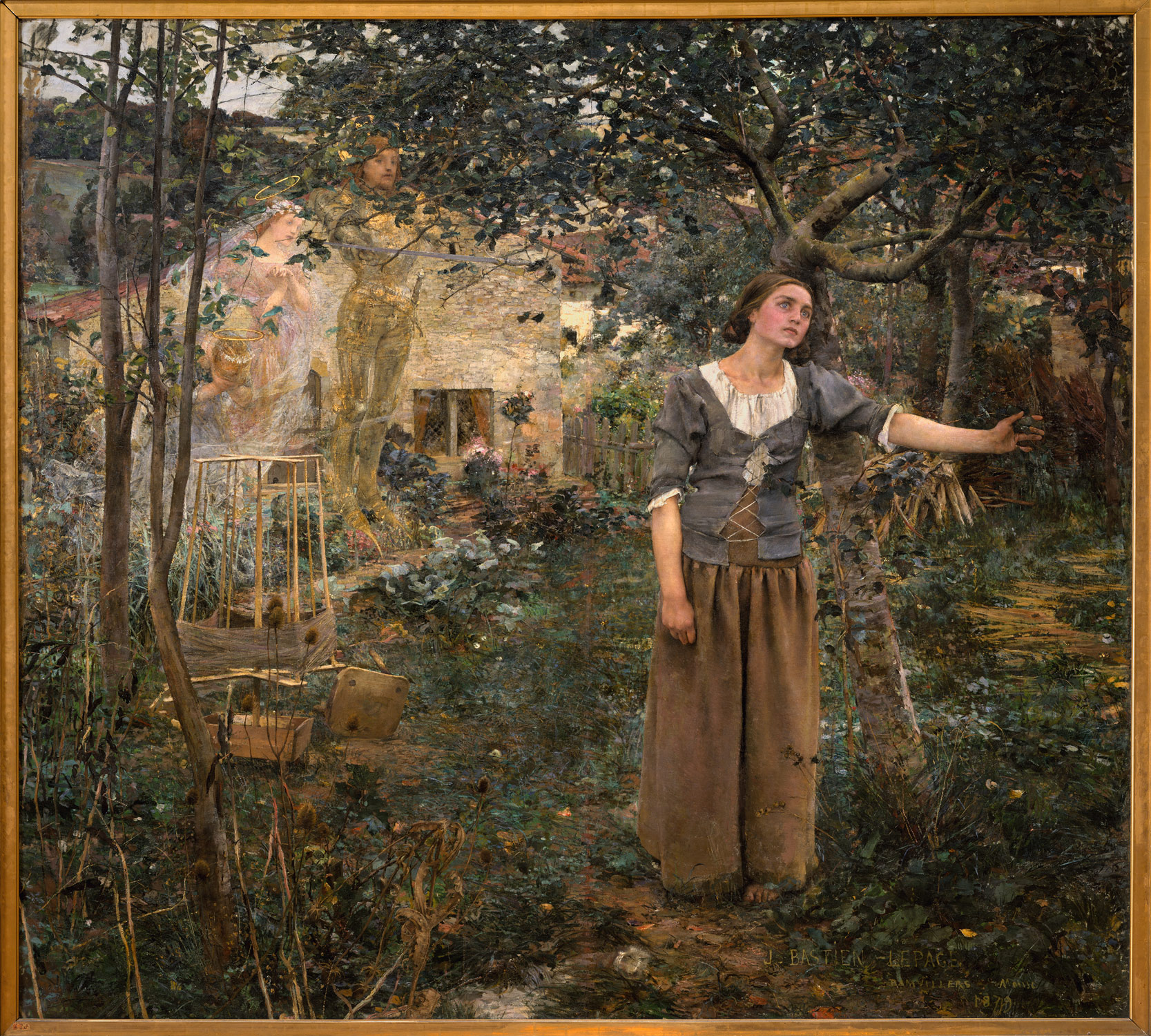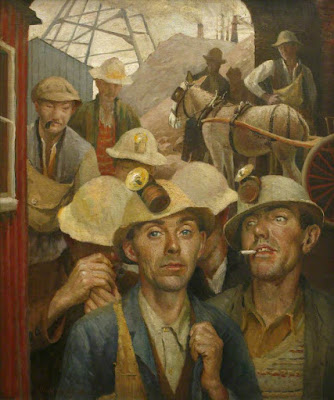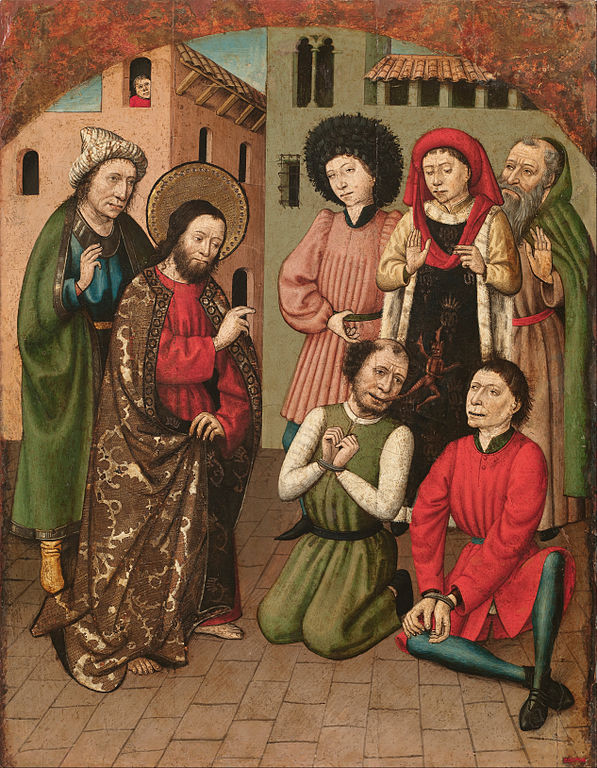My friend John Nicholson and I have decided to try a new project. I will choose a painting based on a Biblical theme and write about it from an artist’s viewpoint; John will write about it from a pastor’s perspective on his blog,
The Shepherd’s Staff.
John is a Baptist pastor from Alabama; I am an artist from New York. Can we find enough common ground in our Christian faith to make this work?

Joan of Arc, 1879, Jules Bastien-Lepage (French, 1848–1884)
Oil on canvas; 100 x 110 in. (254 x 279.4 cm)
The Metropolitan Museum of Art
Jules Bastien-Lepage’s portrait of Joan of Arc at the Metropolitan Museum of Art in New York never fails to make me catch my breath. I wander away from Rosa Bonheur’s gigantic
The Horse Fair, which is a monumental, formal study of controlled energy, and am slapped in the face by The Maid of Orléans.
Joan of Arc was born into a bleak moment in French history. France and England were entering the penultimate phase of the Hundred Years’ War. The English had captured huge swathes of territory and secured the French crown under the Treaty of Troyes, which also declared the Dauphin Charles VII illegitimate. The French countryside was bearing the brunt of a century of fighting, depredation, and the Black Death 75 years earlier.
At about age 13, Joan began to hear voices. Eventually, she sorted these voices to be those of St. Catherine of Alexandria, St. Margaret of Antioch, and the archangel Michael. These coalesced into visions. At her trial, she said: “I saw them with these very eyes, as well as I see you.”
By the time she was 16, her heavenly counselors had become more insistent and specific. She never recounted her visions at her trial, but there is a record of them that slightly predates the relief of Orléans. A Flemish diplomat named De Rotslaer recorded “that she would save Orléans and would compel the English to raise the siege, that she herself in a battle before Orléans would be wounded by a shaft but would not die of it, and that the King, in the course of the coming summer, would be crowned at Reims, together with other things which the King keeps secret.”
The story of her initial rejection (“Take her home to her father and give her a good whipping”) and eventual triumph is worth studying. Two details touch me. The first is that the Dauphin subjected her to a careful theological examination before entrusting his troops to her. The second is that her career ended abruptly after her visions were fulfilled.
Jules Bastien-Lepage was part of a movement in European art and literature known as naturalism. This embraced realism but often was invested with an awareness of the condition of the poor, which in some cases makes the art into manifesto (see Charles Dickens as an example). At the same time, the nineteenth century saw an enormous population shift from the countryside to the cities, so there are elegiac overtones in the genre.

Jean-François Millet (1814-1875)
Gleaners, also called, The Gleaners
Oil on canvas
Musée d’Orsay
(for a far better, copy-protected reproduction, see here)
Bastien-Lepage was temperamentally the heir of Jean-François Millet, who painted the incomparable Gleaners. About Millet, the Catholic Encyclopedia of 1913 said, “he has shown us how the trivial can be made to serve in the expression of the sublime, and how the Infinite and the Divine can be discerned in the humblest existence.” Vincent Van Gogh, Honoré Daumier, and Bastien-Lepage also had that sympathy, although it was tuned differently in each of them.
Bastien-Lepage painted Joan of Arc after the Franco-Prussian War. With their empire ruined and Alsace-Lorraine taken, the French identified powerfully with Joan. Bastien-Lepage’s painting is thus nationalistic, but to regard it as mere propaganda would trivialize it.
For one thing, there is the question of identification. Both the artist and the subject were from Lorraine. Joan was a peasant heroine and Bastien-Lepage was a peasant painter. She must have been an irresistible subject.
 Jules Bastien-Lepage
Jules Bastien-Lepage
Hay Making (Les foins), 1877
Oil on canvas
Bastien-Lepage’s most famous painting was Hay Making. Because it is a smaller and simpler canvas than Joan of Arc, you can make out the technique more easily on your monitor. His technique looks peculiar to us today. He married controlled realism in the figures to Impressionism in the background. These are two radically different ways of seeing and painting. As odd as this seems now, photography and Impressionism were both new in 1877, with no rigid rules. In fact, he synthesized the two approaches beautifully.

William-Adolphe Bouguereau
Tricoteuse, 1879
Owned privately
To understand the academic virtues of his painting, compare Joan of Arc to William-Adolphe Bouguereau’s Tricoteuse, painted the same year (Bouguereau vies with Caravaggio as the best painter of feet ever). The figures share the same perfection of drawing and modeling. But there the resemblance ends. In his best work, Bastien-Lepage used perfection only where it advanced his narrative, and there he pushed it to a photographic clarity—Joan’s loosely-laced jacket, the muddy shoes on the reaper. Bouguereau distilled detail to an ideal. His girl is an archetype of poverty, frozen in time.
In Joan of Arc, Bastien-Lepage introduced Catholic symbolism archaically, so we can almost read this painting like an icon. Joan’s own discarded spinning wheel (covered with wool so coarse we can practically smell it) stands in for St. Catherine’s wheel. Michael’s sword (Joshua 5:13–15) hovers in the air as a portent of the sword Joan would later find behind the altar in the chapel of Saint Catherine de Fierbois.
You can easily see Bastien-Lepage’s Impressionistic brushwork in the background of Hay Making, but it is also the device that allows the three saints to shimmer in Joan of Arc (we just can’t see it online). Moreover, he shoves us into the picture with Impressionist abruptness. We sense we’ve stumbled across Joan in her back garden. Compare this to Gleaners, which is profoundly powerful, but far more classical in its structure.
Nevertheless, Bastien-Lepage was not remotely an Impressionist. It is always Joan’s face to which I first respond. Her moment is awful in the deepest sense of the word. It is not that she has shut us out; instead, she seems to have stopped completely. Today many people see that frozen look as a failure, the result of painting from a reference photo. I disagree. It is a face of transfixion, of awed intelligence. After all, the face of the tedder in Hay Making, is hardly photographic, even though the painter was using the same technique. She is loose-jawed, beyond exhaustion.
This is where Bastien-Lepage diverges from the earlier naturalist painters. Millet saw nobility in the peasants’ suffering; Bastien-Lepage looked forward to the bleakness of the coming century. In the eyes of Joan and the tedder in Hay Makers, there are glimpses of the deep psychological pain of the German Expressionist Käthe Kollwitz.
Bastien-Lepage died young (at 36) and much of his work is either schmaltz or unformed. But some of it veers into greatness. I have to wonder what he would have produced had he lived longer.
(You can peruse Bastien-Lepage’s œuvre online here. You can read the transcript of Joan’s heresy trial here, and the nullification trial here.) In researching this, I also came across the delightful and idiosyncratic Hay in Art.)






























.jpg)


